The Halogenated 2Cs
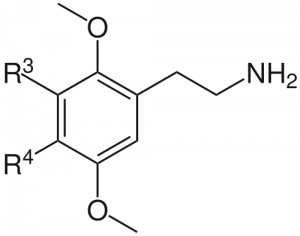
Many phenethylamines can cause changes in consciousness or are involved in the natural neurochemistry of the brain itself, such as dopamine and norepinephrine. Alexander Shulgin described a wide variety of these compounds in his book “Phenethylamines I Have Known and Loved“, and one variant in particular seemed to stand out as a psychedelic superstar. If methoxy groups were substituted on the 2 and 5 positions of the benzene ring, a suprisingly large number of substitutions on the 3 and 4 positions demonstrated profound psychedelic activity. The particular group was dubbed the “2C”s, for the two carbon atoms between the benzene ring and the amino group.
A huge number of these compounds can be synthesized, and several groups stand out with a unique psychedelic character. One of these is the halogenated 2Cs, known for colorful “persian carpet” style visual patterning, peripheral effects including stimulation/sedation, a medium duration of 4-8 hours, and a generally more “shallow” psychedelic feel.
|
3 position: hydrogen 4 position: the highly reactive halogens (fluorine, chlorine, bromine, iodine) |
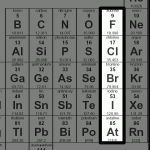 |
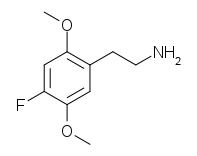
2C-F (2,5-dimethoxy-4-fluorophenethylamine) is a rare compound, tested by only a few subjects and possibly inactive. Only doses of greater than 100mg produced reports of a possible shift in consciousness, but these reports were inconsistent and the shift, if any, was so mild as to be irrelevant for the purposes of further research.
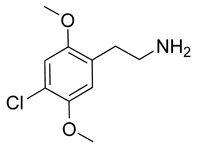
2C-C (2,5-dimethoxy-4-chlorophenethylamine) has been tested more widely, but does not currently have mass appeal presumably due to its mild effect. Oral doses can range from 20-80mg, which produces a psychedelic state with a unique physical character described as “intensely relaxing”, a change from other halogenated 2Cs which tend to produce a stimulated state.

2C-B (2,5-dimethoxy-4-bromophenethylamine) produced the most consistently positive reviews of the halogenated 2Cs in initial tests, and was the first to gain popularity with the wider public. It was used in psychiatric therapy in the 1980s after being first synthesized by Shulgin in 1974 and found favor as a compound that produced a more predictable and empathetic state than other psychedelics like LSD or psilocybin. Word also quickly spread about other side effects, including a distinct erotic enhancement which led to the worldwide sale of 5mg tablets under the brand names Eros and Nexus. Doses from 15-35mg produced a unique psychedelic state characterized by mild stimulation and euphoria, and 2C-B quickly became a drug of choice in the underground. The transition from psychiatric aid to club drug doomed 2C-B to eventual illegality, as it is now internationally controlled under the UN Convention on Psychotropic Substances.
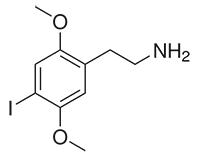
2C-I (2,5-dimethoxy-4-iodophenethylamine) was first sold widely by Dutch smart shops who introduced it as a replacement to the recently banned 2C-B in 2000. Slightly more potent with a dosage range of 10-25mg, it was a good substitute but not “quite there”. With a jitterier stimulant character and less consistent erotic effects it once again gained popularity on the club circuit, but was quickly banned in the Netherlands in 2003. While still legal in many areas of the world, it is unlikely to ever regain the critical mass of popularity 2C-B possessed.
2C-A (2,5-dimethoxy-4-astatophenethylamine) would be the next logical extension after iodine as we march down the periodic table - but the only problem is that astatine is the rarest naturally occurring element due to its radioactive nature and short half-life. Quite a stir was created among some in the research chemical market when it was finally announced that 2C-A would be available for sale, until it became clear that the date of the announcement was April 1st. Shulgin had this to say about 2C-A:
What might be speculated as to [2C-A’s] activity? Probably similar in potency to 2C-I, requiring maybe 10 or 20 milligrams. The duration would be dicey to measure, since the isotope with the longest known half-life is half decayed in about 8 hours, and the longest lived natural isotope (for those who insist on natural rather than man-made things) is half decayed in less than a minute. Two predictions would be pretty solid. You might have quite a job accumulating your 10 milligrams of Astatine, as the most that has so far been made at one time is only about 0.05 micrograms, approximately a millionth of the amount needed. And the second prediction? You would not survive the screaming radiation that would bombard you if you could get the needed 5 or 10 milligrams of radio-astatine onto that magic 4-position, and the resulting 2C-A into your tummy!
In general, the halogenated 2Cs share a unique style of visual distortion, have similar durations, and the character and depth of the psychedelic experience remains fairly consistent - but potency per unit weight and stimulant effects increase as we move up through the halogens by molecular weight.

